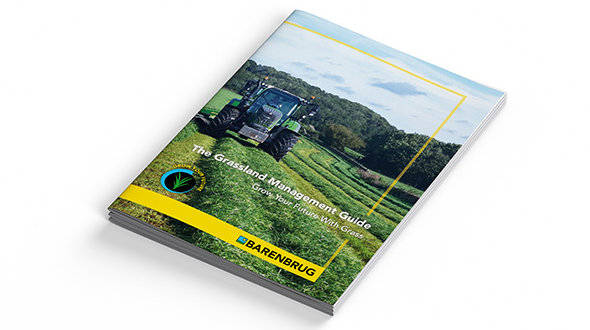How to index your grassland field
Firstly, it is important to have a clear idea of what you need each field to do for your business. Some are there to provide a long grazing season, silage or hay, biodivesrity, increase soil health, reduced inputs or finishing stock. It is important to consider the fields and to ask yourself whether it is doing a job for you.
Visual assessment
This visual assessment of the field needs to be done alongside an assessment of soil structure by digging holes and soil nutrient status by looking at soil test results. If these aren’t right, it doesn’t matter what you sow, the field will not perform.
- Walk the field on fortnightly basis.
- Use a ‘W pattern’ across the field, the same as you would for a soil sample, and avoid any unrepresentative patches such as gateways, around water troughs or patches of weeds. For consistency, it is better if the same person walks the fields each time.
- Stop at points across the field and get down close to the sward to look at the percentage of sown productive species as well as the quality. Look for issues, such as unhealthy shades of yellow green or patchy areas of growth.
- Index each point in your field from 1-5 using the guide below to assess the quality of your field.
- Calculate the average for your field, is it GI5 or GI1 to help decide what the best course of action is for your farm.
GI5
At GI5, a field will have at least 80% of the original sown species remaining. The sward is tight and dense, crowding out opportunists and weeds. If clover’s present, from spring onwards it should provide cover of 30%. At this population, it should pull around 150kg of atmospheric nitrogen into every hectare through the year.
Action: Here, the only challenge is keeping the field at GI5. Three priorities are: sward management (avoiding under or over-grazing, leaving sufficient remainder after cutting); having a nutrient replacement plan (to replace those lost after cutting and grazing); and regular pH testing to keep the soil above 6 (particularly important if legumes are in the sward).
GI4
If weeds and less vigorous grasses are present, the field will be GI4. You’ll have 60-70% of the original sown species, try to identify the cause before remedying it. Over-grazing or poor silaging weather can result in damage and bare patches, while a high sward has fewer tillers and a more open stand. All these factors allow unproductive species to gain a foothold.
Action: Any bare soil should be oversown with clover, while careful height management encourages tillering for a tight, dense sward.
GI3
This field will have docks and weed grasses becoming noticeable and only around half the sown species remains. Soil health could be an issue.
Action: Dig a hole and look for compaction. Check your nutrient status. And of course – when the time’s right – spray out those weeds. If you have done all that, overseeding remains a better bet than a full reseed. It will boost the species mix and restore balance. Summer’s the best time to add clover.
GI2
If the sown species down below 50% and weeds and bare patches are present the field is at GI2 but isn’t beyond redemption, however, without action it is at risk from soil and nutrient run-off.
Action: Remedies are much the same as GI3, although there’s more to weigh up. An overseed at 25kg/ha might give you another 3-4 years but if it’s your worst field – nothing else is requiring more drastic action – then consider a reseed.
GI1
All good things come to an end. Eventually a field can just have a couple of unavoidable bad years – damage at silaging, flooding, poaching, a drought causing overgrazing – and it becomes an open, gappy sward, with weeds and weed grasses offering little in the way of productivity and feed value.
Action: The only sensible option is to reseed. Fertiliser won’t change anything. But before breaking out the plough, consider direct drilling or no-till. You’ll conserve soil moisture and organic matter, leading to quicker establishment. Alternatively, a break crop such as Turnips could help with pest problems and will also aid the breakdown of thatch in the sward. You can follow them with a spring reseed.
The simple approach of the Grassland Index makes it accessible, but ideally it should form one element of a wider assessment that includes soil structure and nutrient status too. Regular indexing through the year can help farmers identify the fields that need the most support. That means efforts can be directed with confidence towards the fields that will deliver the highest return on investment.




